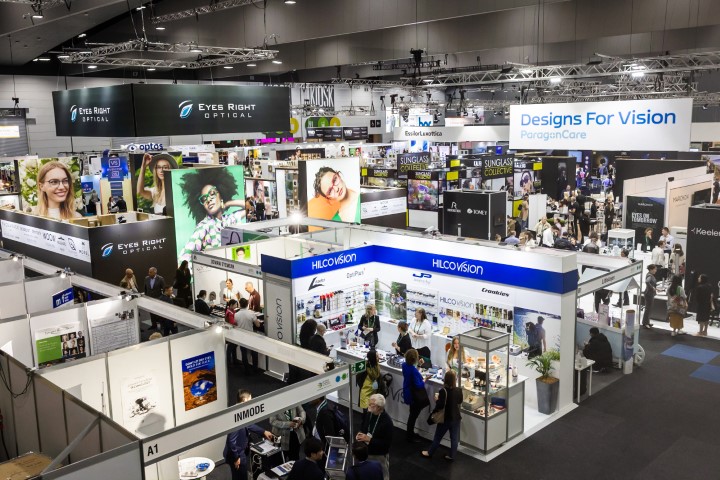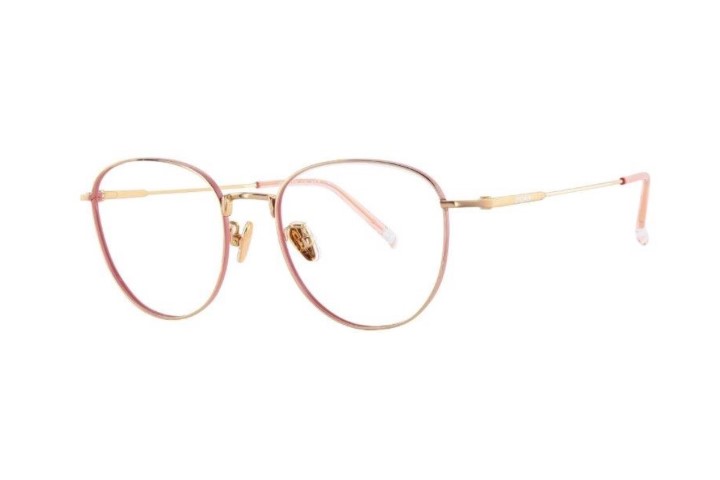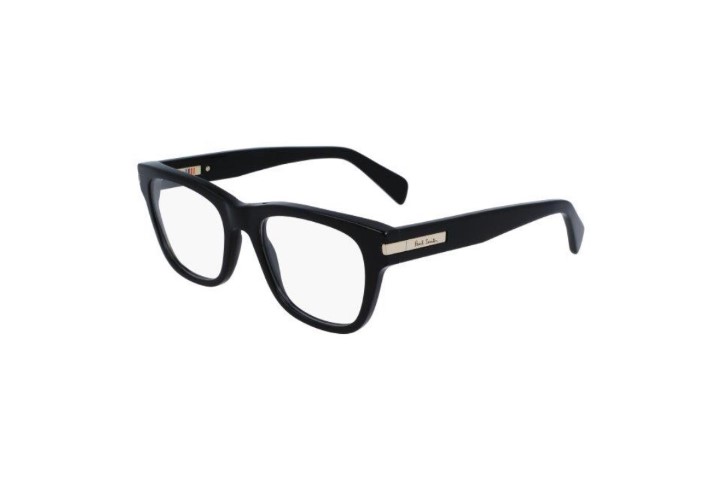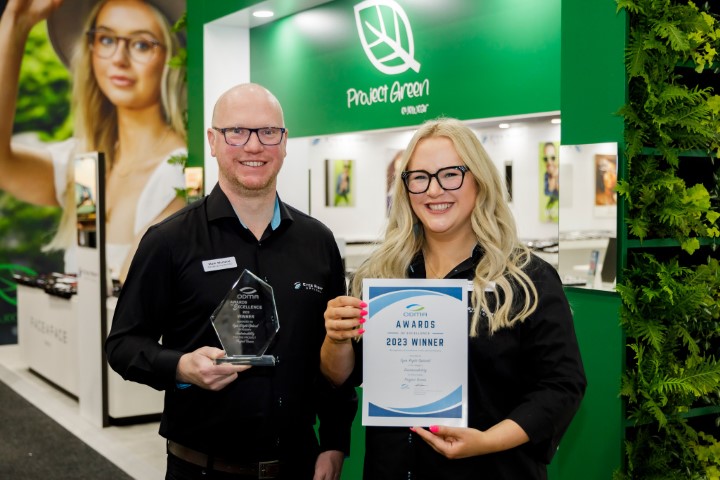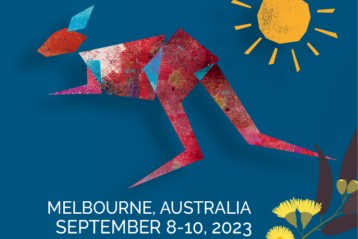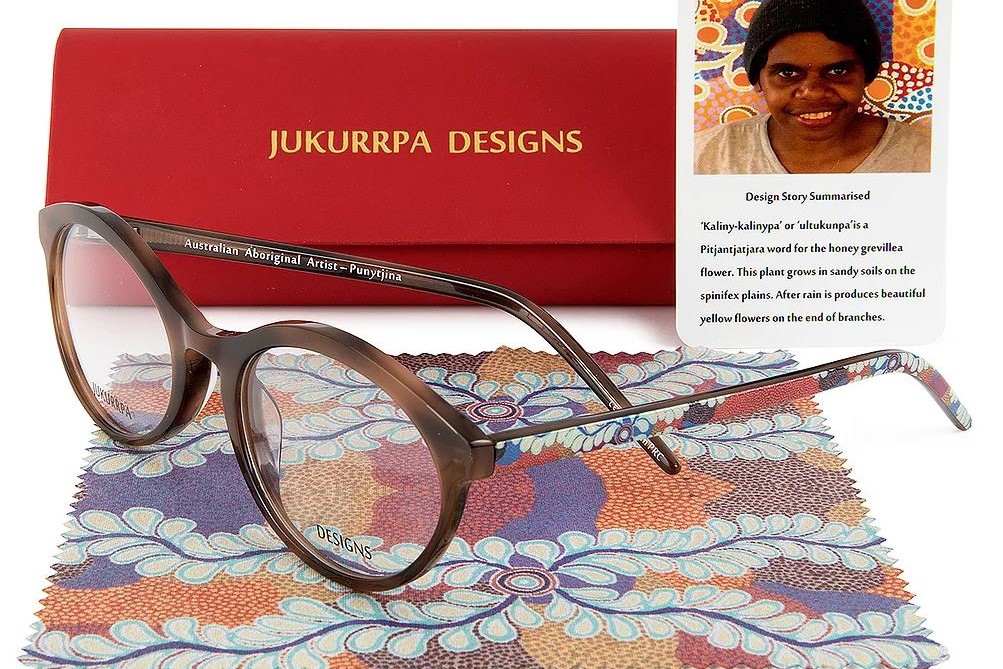A global optometry outlook Down Under
Over three days, more than 3,500 attendees, 80-plus speakers and 90-plus trade exhibitors and presentations meant O=Mega23 and the fourth and Downunder debut of the World Council of Optometry (WCO) conference and fair added up to quite a spectacle! Originally planned for 2021 but delayed due to a certain pandemic, WCO4 and the biennial Optical Distributors and Manufacturers Association (ODMA) Australasian fair combined under the heading ‘Optometry unites, Down Under’. With at least four streams of education running at any one time and the large trade fair open all day, delegates were never short of options.
The conference proper opened with a traditional welcome from Djirri Djirri, the only female Wurundjeri dance group, representing the traditional custodians of Narrm (Melbourne) and its surrounds. WCO and Optometry Australia Victoria-South Australia representatives were joined by parliamentary secretary of mental health and suicide prevention and health infrastructure Tim Richardson for the official welcome. Richardson admitted he’d always considered himself a slow reader until getting glasses and finding out how much of a difference they can make!

Leith and Kevin O’Connor, Adam Norwood and Lynne Parker
In his initial talk, our first keynote speaker, Professor James Wolffsohn from Aston University in the UK, covered the power of consensus in optometry, where he reminded us it usually takes around 17 years for research to translate into clinical practice. He also discussed how consensus among practitioners can be applied to assist funding and identify areas where further research is required, noting the most effective treatment for any patient is the one that they will use – something I’ve always found to be true!
The dry-eye and app blues
Prof Wolffsohn was then joined on stage by our own Professor Jennifer Craig who, together with Canada’s Professor Lyndon Jones, presented the WCO-Alcon dry eye wheel, showing how we can all be involved in dry-eye care. Next up was the Tear Film & Ocular Surface Society’s (TFOS’) recent research on digital eye strain (DES), which Prof Wolffsohn defined as a symptomatic condition without a clear identifying clinical sign for which evidence-based studies have not found a curative magic bullet.

Profs James Wolffsohn and Jennifer Craig
DES was also discussed by some of our University of Melbourne colleagues Associate Professors Andrew Anderson and Laura Downie, who reminded us a cell phone emits only around 0.3% of the blue light required to cause retinal damage. They summarised their own findings and current research showing omega-3 supplementation is the most effective treatment for DES (but this is only low-certainty evidence), while their recent randomised controlled trial found blue-light-filtering lenses did not reduce symptoms of computer vision syndrome any more than non-filtering lenses.

Anne Matheson, Frances Misich and Sarah Bibby
DES was possibly a hot topic among attendees too, since the organisers had chosen to make the conference environmentally conscious by not providing pens or paper. I can, however, confirm that cell phones are an exceptionally good tool for note taking, and were required for the Arinex conference app anyway. The app contained the programme and updates throughout the day, including when and where lunch was served. For CPD accreditation, app login was required as you attended each session, and multiple-choice questions were available for most talks after the session had commenced. I can certainly see how this would make it easier for organisers to log attendance and CPD, but I confess there were several talks when more time may have been spent on getting the app to work and proving attendance than on digesting the actual content.
From detail to the whole: a global perspective
The conference’s other keynote speaker was Dr Susan Cotter, professor of optometry at the Southern California College of Optometry at Marshall B Ketchum University, who’s also co-chair of the Pediatric Eye Disease Investigator Group (PEDIG). Her emotive talk described how uncorrected refractive error in children is linked with poorer health and life outcomes and showed how correcting our young, moderate hyperopes (+3 to +4) could change their life trajectory. She went on to discuss overminus treatment for intermittent exotropia, including a handy scale to gauge control, highlighting the importance of not over-minusing our already myopic patients as this is associated with a greater myopic shift. Prof Cotter also closed the conference with a session on the risks and rewards of using ChatGPT (which probably could have written this article for me, but I opted for the old-fashioned way).


Marchon’s Tony Mithen with IOGroup’s Neil Keith Miller, Optical Dispensers Australia’s Lou Thomas
Human and Campbell Wiltshire and April Petrusma, and Niall McCormack
Apart from the plenaries, the rest of the programme was split into 13 ‘streams’, including big hitters such as myopia management, glaucoma and neuroprotection, and systemic disease, which were handily colour coded in the programme. There was also space for more boutique topics, such as a case report on Citrobacter diversus causing contact lens acute red eye, which had never been previously reported in the literature (it’s normally linked with endophthalmitis), and a talk covering localised diabetic retinopathy features in 45° fundus photographs. After analysing many images, researchers said exudates are most often seen temporal to the macula, microanyrisums throughout the posterior pole and cotton wool spots over the radial peripapillary capillaries around the nerve.
Indigenous eye health and public health were another two prominent streams, with several talks each day. Several presentations were drawn from the recent World Health Organization’s (WHO’s) ‘World report on vision’ and its impact on optometry. We were encouraged to be aware of its findings – of the 2.2 billion people worldwide with some form of vision impairment, at least 1 billion of them have yet to be treated or could have had their sight spared – and consider our opportunities to advocate for better care for all.
The fair
Although I didn’t arrive at the ODMA trade fair with a shopping list, I was amazed to see all the new technology and gorgeous frames. Several attendees had appointments set up with their preferred suppliers and lots of stands had VIP areas or on-stand refreshments, such as coffee or wine. Several not-for-profits and the daily changing poster exhibits were in the corner of the room where lunch was served, so you could eat and catch up with colleagues or browse some of the more worthwhile offerings between lectures.


Janet Chung, Kobi German Optos ANZ team: Anton Tesoriero,
and Essilor’s Vineet Chauhan Urszula Prokopiev, Khoa Du
and managing director Jason Martone
Overall, this was a fascinating three days at one of the largest optical conferences in the Southern Hemisphere. There was definitely a theme of being urged to look to the future, globally and locally, and how we can better help those with preventable vision loss. I look forward to seeing how those WHO reports are acted upon, the results of New Zealand’s own eye health survey (when it finally happens) and being able to use these learnings to assist the patients I see in clinic.


Stephanie Mander (née Wallen) is a New Zealand-trained therapeutically qualified optometrist, now based in Mildura, Victoria, and secretary of the Cornea and Contact Lens Society. Her current career highlight is a stint volunteering with YWAM in Papua New Guinea.







